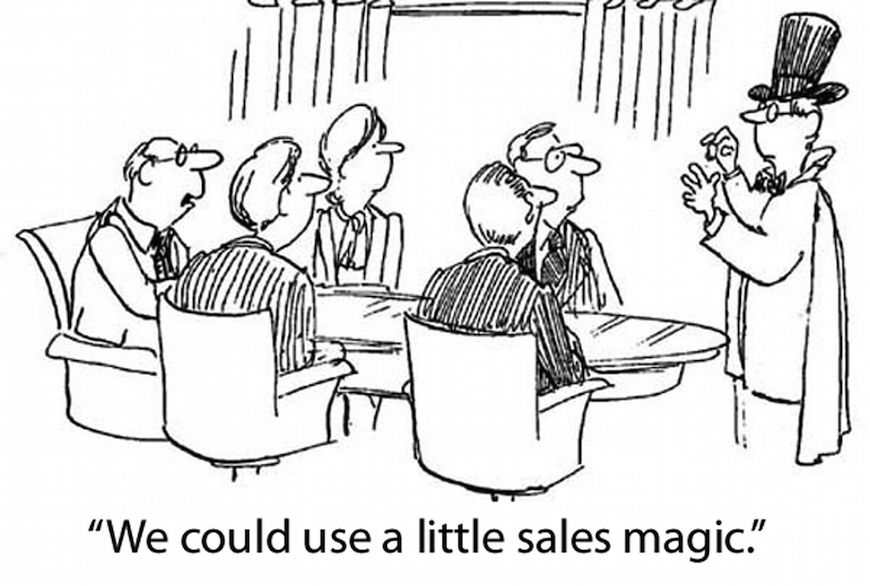
How To Generate Quality Sales Leads
You can generate new sales leads for your business in a variety of ways — word of mouth referrals, paid advertisements, search engine listings, etc. The list goes on and on. But if you want to improve the quality and volume of sales-ready leads, then this post is for you.
In this post, we’ll cover how to generate sales-ready leads with the power of marketing automation. Click on a link below to jump to that section or go to our marketing automation services page to learn how we can help your business.
- Marketing Qualified Leads vs. Sales Qualified Leads
- Lead Generation Campaign Strategies for Your Business
- Using Lead Generation Services And Software
Definitions: Marketing Qualified Leads vs. Sales Qualified Leads

For the purpose of this post, we’re going to consider “marketing-qualified” and “sales-qualified” as two parts of the same lead generation process. It’s a simplification (e.g. some sales leads may not come from marketing efforts) but it’s true most of the time.
The first part of quality lead generation is making sure it’s “marketing qualified”. A marketing qualified lead (MQL) is a prospect that has provided enough information that your sales team can contact to the prospect. What qualifies as enough information is up to you and your sales team; it may be as little as “Name” and “Phone Number” or as much as 10 different fields in the contact record. MQLs are then shared with your sales team for next phase of the process.
After receiving MQLs from your marketing team, a lead becomes “sales qualified” (SQL) if the contact provides your sales team enough information to consider him or her willing and able to purchase your products or services. After this, the lead hopefully turns into a customer or client where they’re delighted by your company and customer service to the point where they start the process over again and buy more from you.
As we mentioned before, we’re blurring the line between MQLs and SQLs. Marketing and sales lead generation responsibilities contain significant overlap so, in our opinion, it makes sense to talk about them together. The bottom line is that qualifying your leads helps save your salespeople’s time and your marketing team’s budget.
Now, let’s get into important part — how to generate quality leads your sales team can immediately use.
Lead Generation Campaign Strategies
Generating quality sales leads starts with your marketing campaigns. Whether it’s advertising, email, or networking, these efforts are what generates most of your business’s leads. So what can you do during this part of the process to get more qualified leads to sales
Diversify Channels for Lead Generation Campaigns
Do not silo your lead generation campaigns by channel. While you will be making minor changes based on the channels you’re using, the heart of the campaign remains the same.
So if you’re trying to sell more yellow widgets, the blog post about yellow widgets for your search engine marketing campaign can easily be repurposed for an email campaign. It often helps to develop a system for diversifying the channels you’re using to generate sales leads. Something like this would work for most companies:
New Blog Post –> Social Media Updates –> Paid Ads –> Dedicated Email Blast
With this diversification, your yellow widget campaign is now targeting four different audiences through four marketing channels:
- Search marketing
- Social media marketing
- Paid advertisements
- Email marketing
Identify Lead Generation Sources That Work Best

Multi-channel conversion reports are a great way to tell which marketing channel is making you the most money. This allows you to attribute percentages of a lead to different marketing channel. For example, a qualified lead may go through a process like this:
- Clicked on a social media update
- Read one of your blog posts
- Clicked on a remarketing ad 3 days later
In the instance above, attributing the lead’s source can be difficult. Many companies simply use “last touch” attribution, which attributes 100% of the lead to the remarketing ad, but then you’d be overlooking the power of social media and on-site content marketing. But with multi-channel conversion reporting, that’s not a problem.
Use Call Tracking to Qualify Sales Leads
Marketing and sales are two parts of the customer experience continuum. By sharing information between these two parts of the process, you’re better able to understand what’s working and what’s not working.
Specifically, analyzing phone calls allows you to quickly and easily identify your most profitable marketing campaigns. You can think of this as a multi-channel attribution “hack” that ties sales qualified leads back to the marketing channel that generated the phone call.
There are dozens of call tracking tools that help you to qualify phone leads. The one that we prefer to use is CallRail; they provide an intuitive way to use trackable phone numbers for your different marketing channels. And their call monitoring solutions make it easy to generate reports on call volume alongside custom tags for categorizing the quality of the lead.
Other Lead Generation Strategies
This post is meant to provide an overview for how to generate sales leads. If you want to read specific lead generation tactics and examples, we suggest checking out some of the content linked below:
- HubSpot’s 4 L’s of a Successful Lead Generation Strategy
- CIO’s 8 Lead Generation Strategies That Will Boost Your Sales
- Unbounce’s 32 Clever Lead Generation Ideas For Your Next Marketing Campaign
Using Lead Generation Services And Software

Now that we discussed why lead qualification is important and what you can do to generate new leads, let’s talk about how you can set up a lead generation system.
Your business has a variety of options if it wants to upgrade the lead generation process. You can get help from an agency or you can pay for lead lists from aggregator services. If you want to keep it in-house, you can setup automated software that assists with lead generation and qualification. Let’s take a quick look at the two approaches.
Outsourcing Lead Generation
One way to outsource lead generation is to purchase lists from lead aggregator services. An example of this types of service include home refinancing websites that collect contact information from would-be refinancers and sell it to banks. If you’ve ever seen an ad promoting something like a “too good to be true refinancing offer from Obama”, that’s most likely the work of an underhanded lead aggregator. As you can imagine, the quality of their leads can be quite questionable.
A safer approach would be to engage an agency that specializes in lead generation strategies. They’ll work alongside your company’s marketing team to bring your campaign ideas to life and ensure everything is performing optimally. At least that’s what your agency should be doing.
Keeping Lead Generation In-House
If you want to keep things in-house and supercharge your marketing team’s lead generation efforts, there’s plenty of lead generation software that can help. In our opinion, the software that best supports sustainable growth and holistic marketing goals would be marketing automation software.
Marketing automation software allows you to easily create sophisticated marketing and sales lead qualification processes. And by automating many of the processes, you’re able to extend the impact of your marketing campaigns.
The best example of an automated lead generation system made possible by marketing automation are nurture email campaigns. By setting up these automated email sends, you’re able to deliver the right content at the right time for all your prospects — regardless of the size and availability of your sales staff.
Additionally, marketing automation suites commonly offer sales prospecting and lead scoring features. The prospecting features can help your team target individuals or companies that fit your ideal customer profile. Lead scoring follows up with this by automatically prioritizing new leads by their willingness and ability to buy from your company. Together, these two features can save your sales team significant time.
If you want our recommendation for marketing automation software, we suggest using HubSpot. It’s what we provide many of our clients and it’s lead to huge successes. You can learn more about HubSpot marketing automation services and how we can help here.
Better Lead Quality Means Better Marketing ROI
How your company generates quality sales leads is unique to your company. But the process for figuring out where the best leads are coming from and how to get more of them is the same.
By diversifying your marketing channels and identifying the ones that work the best, you can easily fine tune your lead generation strategy and increase your company’s demand.
If you need help with any of these concepts, let us know by filling out our contact form. Our marketing strategists specialize in marketing automation implementation and management and we’d be happy to help your company.
Most newsletters suck...
So while we technically have to call this a daily newsletter so people know what it is, it's anything but.
You won't find any 'industry standards' or 'guru best practices' here - only the real stuff that actually moves the needle.






